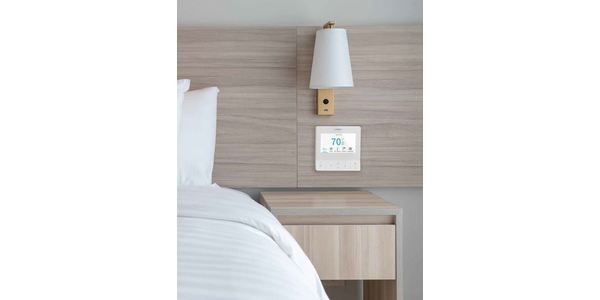Shipments of Advanced Controls Devices for HVAC Will Reach 70.4 Million by 2023
The consumption of energy for heating, ventilation and air conditioning systems in commercial buildings represents a key contribution to total global energy use. Although advanced controls technology for HVAC systems is mature, adoption of the newest technologies remains relatively low, and HVAC controls retrofits can provide a compelling value proposition through reduced energy consumption in existing buildings. According to a new report from Navigant Research, shipments of advanced controls devices for HVAC in commercial buildings will grow from 33.8 million units in 2014 to 70.4 million in 2023.
Such devices include a variety of sensors, controllers and thermostats that assist with the efficient management of commercial HVAC systems. Navigant Research forecasts that the largest device categories over the coming decade, in terms of unit shipments, will be temperature sensors, airflow sensors, variable air volume or terminal controllers, fan coil unit controllers and CO2 sensors.
“Networked digital controls for HVAC systems have been available for many years, but much of the existing building stock is still dependent on older technologies,” says Benjamin Freas, research analyst with Navigant Research. “New building certification and benchmarking regulations are driving faster retrofits of controls in existing buildings, and changing how automation is designed into new buildings.”
Future economic growth presents a primary uncertainty for this segment. The advanced HVAC controls market remains very dependent on rates of new construction and building renovation, which in turn are driven by the overall economic conditions in each world region. The market has been negatively affected by the 2008 financial crisis, and is only now beginning to experience a modest but accelerating recovery, according to the report.
The report “Advanced HVAC Controls”, analyzes the global market for remote advanced HVAC controls, segmented by equipment type, sensors, field devices, floor-level controllers, building-level controllers, as well as building use, office, retail, education, healthcare, hotels and restaurants, institutional/assembly, warehouse and transport, in each major world region. The report provides an analysis of the market issues, including technology advances, opportunities and barriers, associated with advanced HVAC controls. Global market forecasts for unit shipments and revenue, segmented by device type and by region, extend through 2023. An Executive Summary of the report is available for free download on the Navigant Research website.


